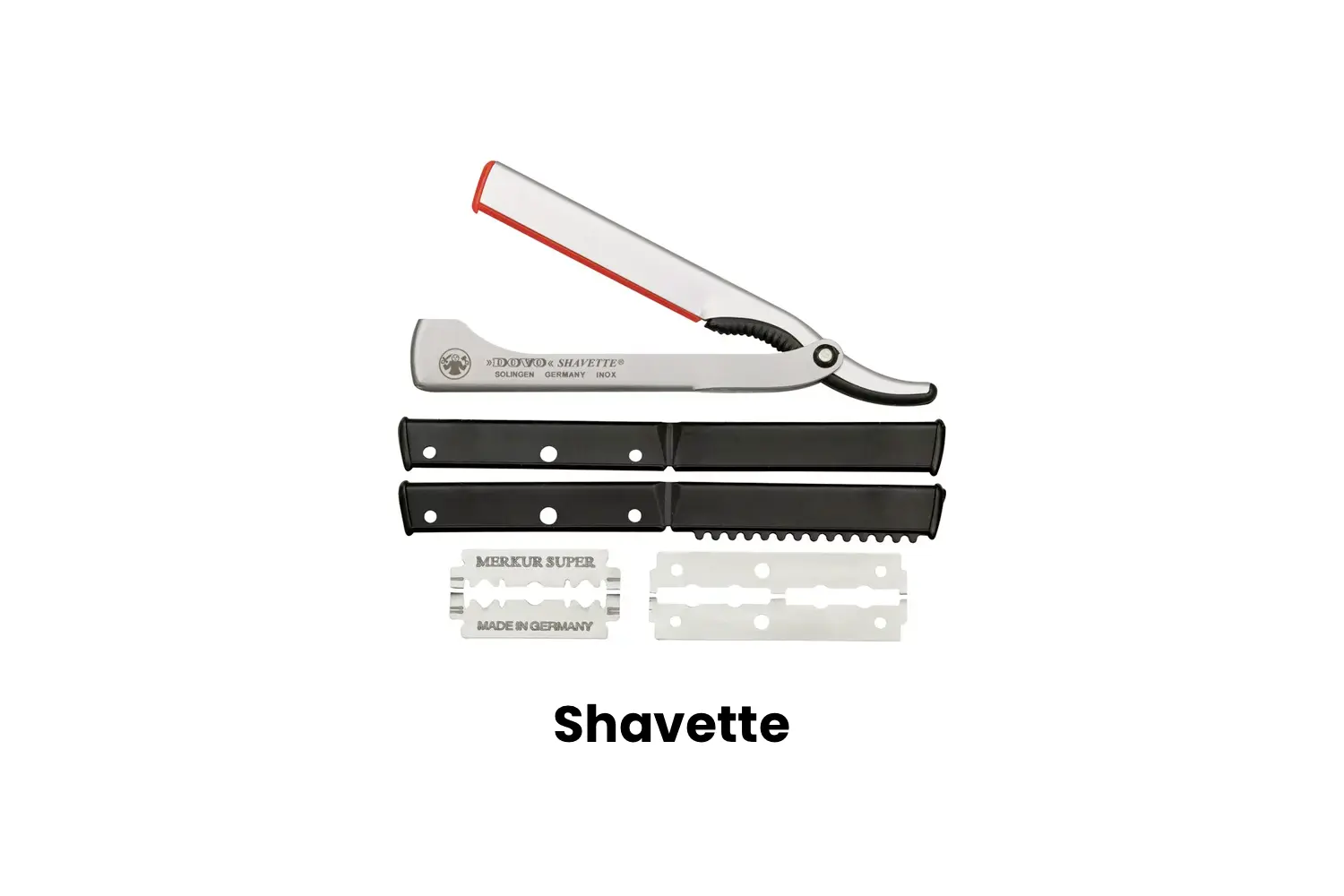A shavette is a term that doesn’t quite roll off the tongue for most people. Usually associated with professional barbers or dedicated wet shavers, a shavette is a variant of a straight razor with one notable difference—it uses disposable blades.
In the world of shaving, shavettes have typically been used for detailing, like shaping sideburns or beard lines.
However, can they be used for daily shaving?
Below, we explore the benefits and drawbacks of a shavette and whether it’s an instrument fit for a beginner.
What is a Shavette?

A shavette is a type of straight razor—designed to look like a straight razor but using disposable blades. While straight razors require regular honing and stropping, shavettes save you that extra maintenance as once the blade becomes dull, it is discarded, and a new blade is inserted into the razor.
Shavettes tend to be lighter than straight razors and are often used by barbers for neck cleanups, detailing, and other precision tasks. Some wet shavers prefer using a shavette for reliably sharp shaves without the hassle of honing and stropping.
Here’s a brief comparison table of shavettes and straight razors:
| Feature | Shavette | Straight Razor |
|---|---|---|
| Blades | Disposable | Fixed |
| Regular Honing Needed | No | Yes |
| Weight | Lighter | Heavier |
| Razor Sharpness | Consistent | Depends on maintenance |
| Cost | Lower initial, regular replacement costs | Higher initial, no replacement costs |
| Environmental Impact | Less eco-friendly due to disposable blades | More eco-friendly in the long run |
We provide a full comparison of shavettes and straight razors here.
Benefits of a Shavette
Hassle-free Maintenance: Shavettes use double edge razor blades that have been snapped in half (or shavette blades). These blades are disposable and can be easily replaced. You can simply discard the blade once it becomes dull and insert a new one.
Cost-effective: Shavettes tend to be cost-effective, especially for those who don’t shave often. The initial cost of a shavette razor is generally lower than that of a straight razor. A well-made shavette will only cost $30, and blades are equally inexpensive.
Hygienic: The ability to change the blade after each use (or every few uses) makes shavettes a hygienic option. This feature is why barbers often prefer them – and are required by law to use them.
Drawbacks of a Shavette
Requires a Steady Hand: Just like with straight razors, you need a steady hand to shave with a shavette. The very sharp and exposed blades can easily result in nicks and cuts if not handled correctly.
Not Very Forgiving: Shavettes are less forgiving than other razors like cartridge razors or safety razors. Even a small mistake can lead to a cut. You must always hold the blade at the correct angle of 30 to 45 degrees to avoid cuts.
Limited in Use: Unlike other types of razors available, shavettes are fairly limited in what they can shave. They are best for facial hair use only – manscaping or shaving other parts of the body is not recommended.
Is a Shavette Good for Beginners?
For someone who is new to wet shaving or transitioning from cartridge razors, a shavette can pose quite a challenge and typically isn’t recommended for beginners. The steep learning curve and lack of forgiveness can lead to a high chance of getting cuts and nicks. Most wet shaving enthusiasts recommend going with a straight razor instead. However, if you are just testing the waters, this option may be too expensive.
We would recommend starting with a safety razor instead as they are more forgiving and easier to use. Once you have mastered the safety razor, you can move on to a straight razor or a shavette.
Does a Shavette Get a Close Shave?
Shavettes can provide as close shave as any other shaving tool given that you are using suitable blades and have mastered the technique.